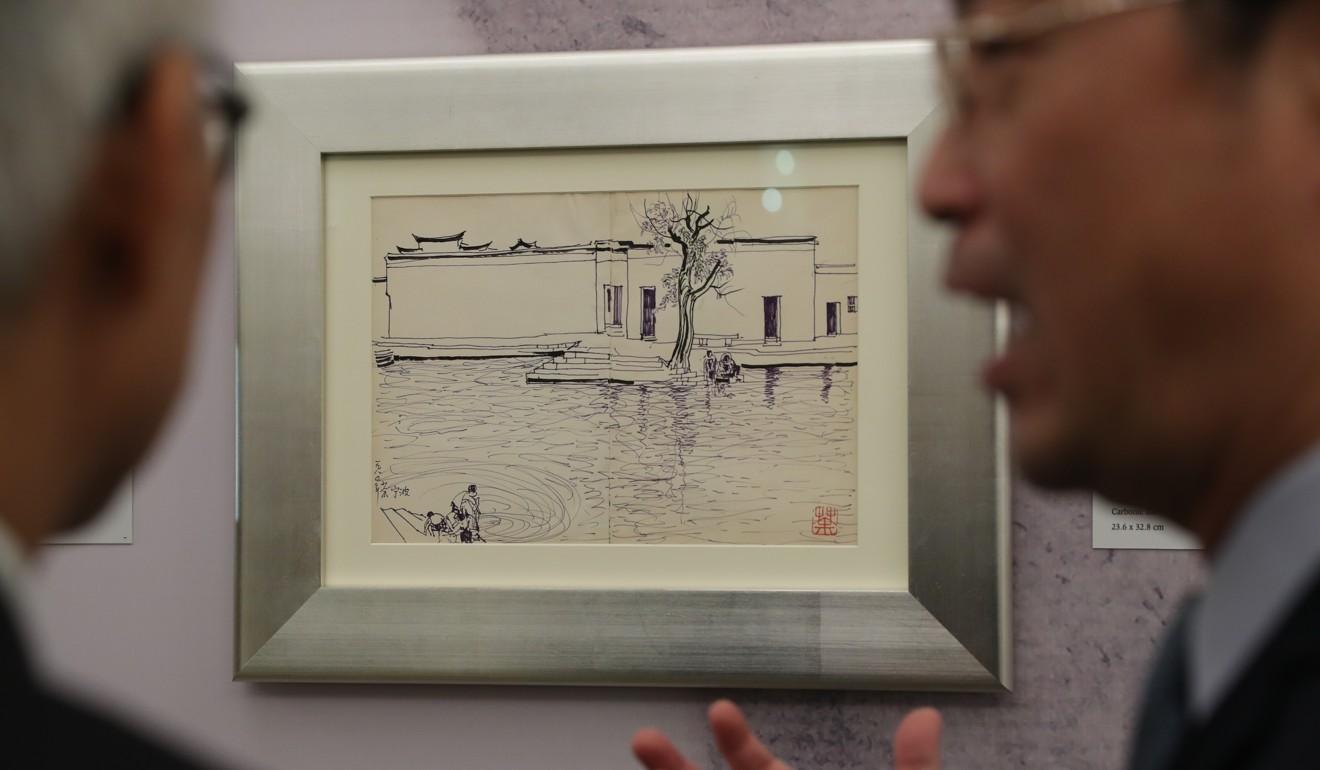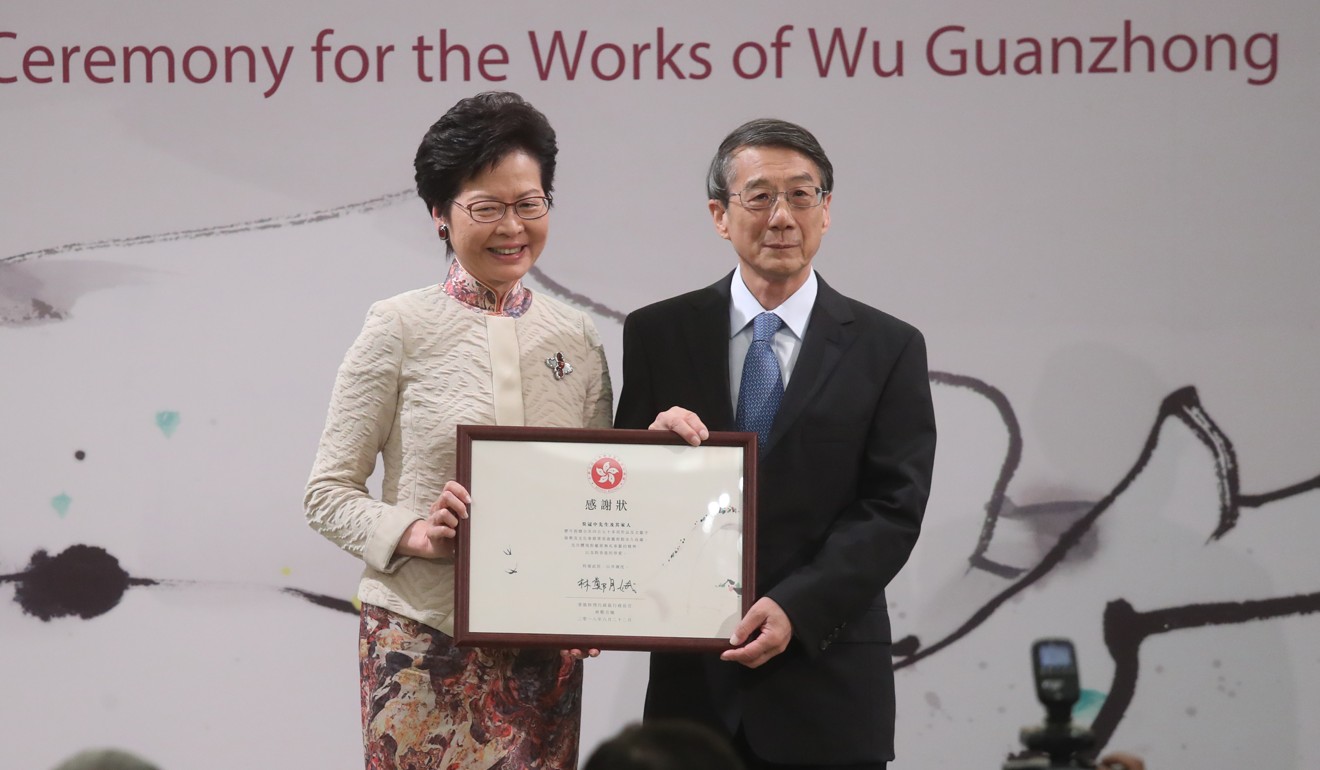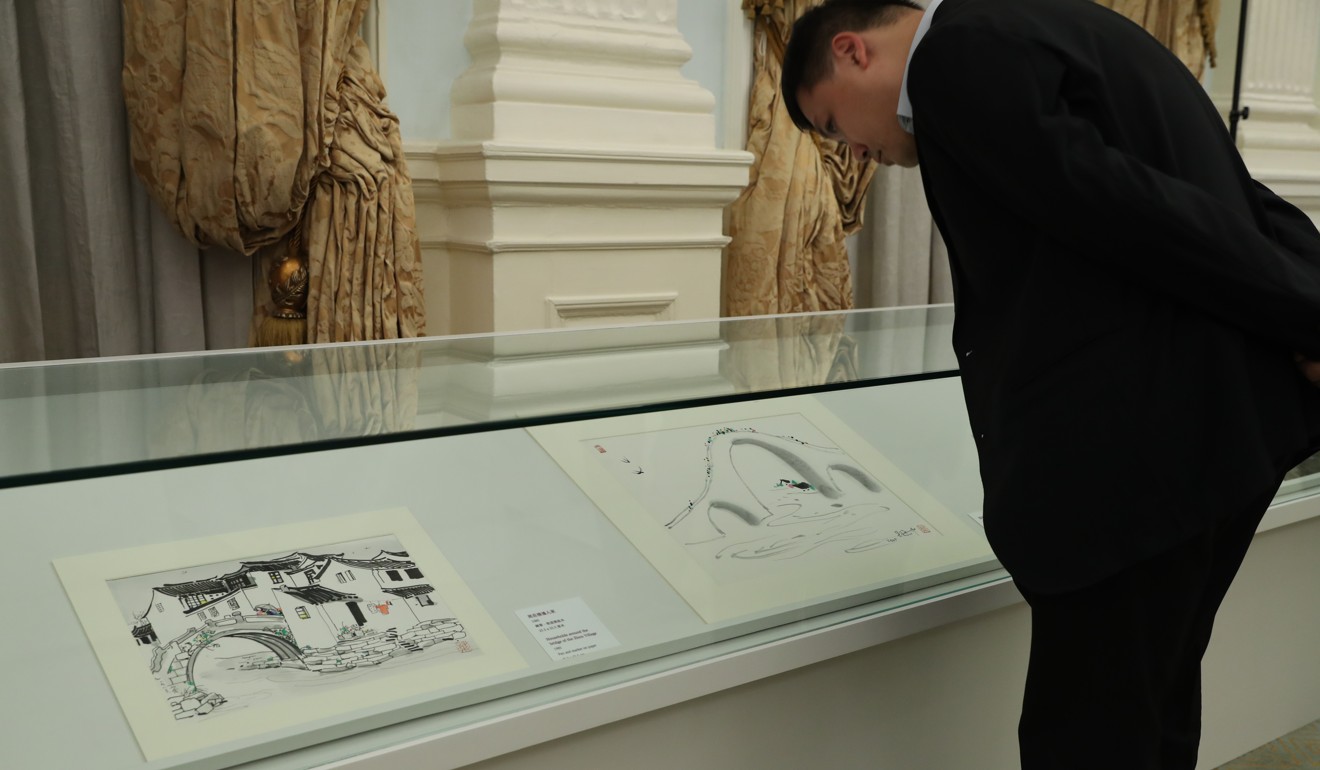
Hong Kong museum now boasts largest collection of modern artist Wu Guanzhong’s work after sixth family donation
Some 370 pieces of the Chinese painter’s work have been given to the Hong Kong Museum of Art, including the last four pieces he completed before his death
The Hong Kong Museum of Art is set become the venue with the biggest collection of the most important paintings by one of China’s greatest modern artists, Wu Guanzhong, with the latest batch of donations from the family of the late painter.
While neither Wu’s family nor the museum put a value on the donations, an honorary adviser and former curator for the museum, Joseph Ting Sun-pao, estimated the total value at HK$1 billion (US$128 million) or more.

With the latest donation, the Museum of Art will arguably own the most comprehensive collection of Wu’s work.
“We now have oil paintings, ink paintings, sketches, watercolours, gouache paintings, acrylic paintings and porcelain paintings by the great artist over more than half a century,” the incumbent museum curator Szeto Yuen-kit said.
The museum received a donation of ancient Chinese artworks, estimated to be worth at least HK$3.8 billion (US$480 million), from Chih Lo Lou private art studio last month.

Szeto said the donations reflected Hong Kong’s status as the international centre for preservation and conservation of Chinese cultural treasures with its unique position as a mix of East and West.
“It also reflected the recognition of the professionalism and passion of the museum within the art community,” he added.
Doing things differently: museum buys artists’ future works as well as their past oeuvre of digital art – which is freely available online
A figure of extraordinary significance in 20th century Chinese art history, Wu’s work has been commercially popular. Last month, an ink and colour painting by the master, Bamboo in Li River, was sold for US$10.8 million at an auction in Beijing. In 2016, his oil painting, The Zhou Village, was sold for US$30 million at an auction in Hong Kong.

Last year, another ink and colour painting, Village in Guizhou, was sold for US$2.97 million in Hong Kong.
Wu’s son, Wu Keyu, said of the value of his father’s work: “We hope people would judge the works by their artistic value, not in terms of money.
“Father preferred Hong Kong because the city is a place where East meets West, much like his works that combine a sense of Western oil painting and Chinese ink-wash painting. He once said: ‘In Hong Kong, I could see the East and the West. People can exchange their ideas in almost anything. That’s why I like Hong Kong.’”
Wu Guanzhong painting sells for HK$31.6m
Wu and his family had previously made five donations of his work to the Museum of Art since 1995.
In total, the museum has collected 450 of Wu’s pieces.
“It has always been father’s wish that his work should be made more accessible. He hoped they can be put in public museums so that more people can view them and learn more about art and its beauty,” his son added.

Chief Executive Carrie Lam Cheng Yuet-ngor, who officiated at the donation ceremony, thanked the family for their generosity.
She said the art pieces would make the Museum of Art, to be reopened next year after renovation, one of the best museums in Asia, “showcasing the world’s top artworks to the public” and “consolidating Hong Kong’s reputation as a capital of culture”.
There will be a dedicated gallery, to be named the “Wu Guanzhong Art Gallery”, in the Museum of Art to display the pieces when the Tsim Sha Tsui venue reopens.

